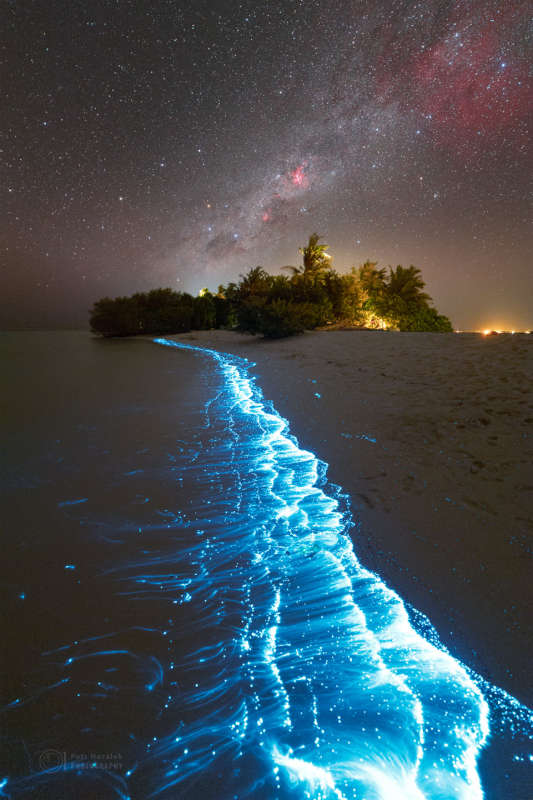Credit & Copyright: Petr Horclek /
Institute of Physics in Opava,
Sovena Jani
Explanation:
What glows there?
The answer depends: sea or sky?
In the sea, the unusual blue glow is
bioluminescence.
Specifically, the glimmer arises from
Noctiluca scintillans, single-celled plankton stimulated by the lapping waves.
The plankton
use their glow to
startle
and illuminate predators.
This mid-February display on an island in the
Maldives was so intense that the astrophotographer
described it as a
turquoise wonderland.
In the sky, by contrast, are the more familiar glows of
stars and
nebulas.
The white band rising from the artificially-illuminated
green
plants is created by billions of stars in the
central disk of our
Milky Way Galaxy.
Also visible in the sky is the star cluster
Omega Centauri, toward the left, and the famous
Southern Cross
asterism in the
center.
Red-glowing nebulas include the bright
Carina Nebula, just right of center, and the expansive
Gum Nebula on the upper right.
1999 2000 2001 2002 2003 2004 2005 2006 2007 2008 2009 2010 2011 2012 2013 2014 2015 2016 2017 2018 2019 2020 2021 2022 2023 2024 2025 |
Yanvar' Fevral' Mart Aprel' Mai Iyun' Iyul' Avgust Sentyabr' Oktyabr' Noyabr' Dekabr' |
NASA Web Site Statements, Warnings, and Disclaimers
NASA Official: Jay Norris. Specific rights apply.
A service of: LHEA at NASA / GSFC
& Michigan Tech. U.
|
Publikacii s klyuchevymi slovami:
Milky Way - Mlechnyi Put'
Publikacii so slovami: Milky Way - Mlechnyi Put' | |
Sm. takzhe:
Vse publikacii na tu zhe temu >> | |
